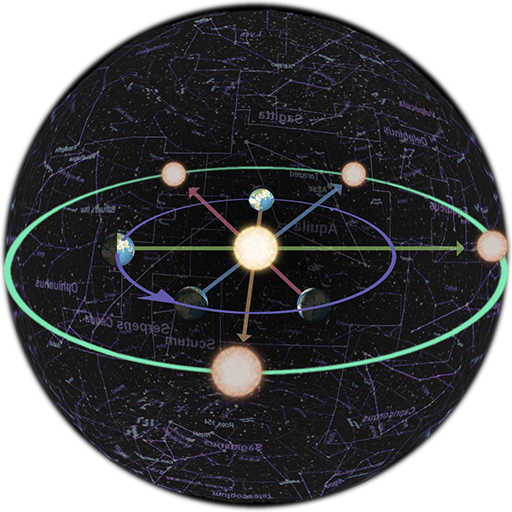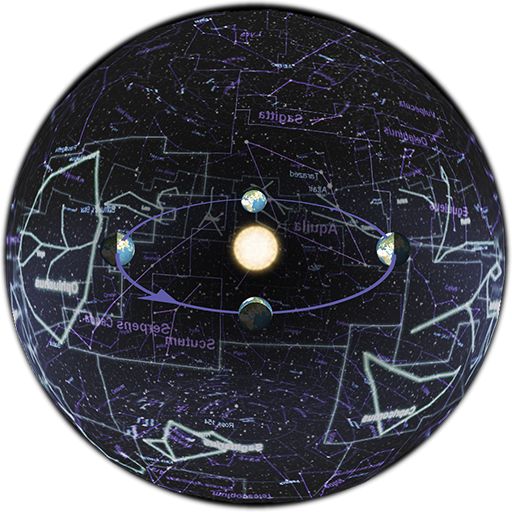


 U.Mars — Encyclopedia
U.Mars — Encyclopedia
Basic Astronomy and the Nighttime Sky
As the Earth orbits the Sun, the Sun traces out an apparent path across the celestial sphere called the ecliptic; the term ecliptic also applies to the plane in which the Earth orbits the Sun. The diagram below demonstrates the Sun's change in position relative to the background star field over the course of a year. Follow the lines from Earth's "point of view."

diagram of Earth's motion in orbit and the ecliptic path — the Sun's apparent motion against the background of distant stars
(click on the image to enlarge)
The subset of constellations which are crossed by the ecliptic line is referred to as the zodiac. As the stars (or asterisms) of these zodiac constellations do not move appreciably from one year to the next, the Sun's annual motion through them appears very regular. In fact, however, cyclical variations in Earth's motions over long times — thousands of years — do cause some drift in the timing of the Sun's passage through the zodiac constellations. This precession is also responsible for other effects, such as the change over time in which star is best considered a "pole star" (currently, Polaris is Earth's "North Star").
The diagram below highlights how those constellations crossed by the ecliptic; their names may be familiar to you — they are:
| Aries | Leo | Scorpio | Capricorn |
| Taurus | Virgo | Ophiuchus | Aquarius |
| Gemini | Libra | Sagittarius | Pisces |
| Cancer |

diagram of zodiac constellations as a result of the ecliptic
(click on the image to enlarge)
See also: